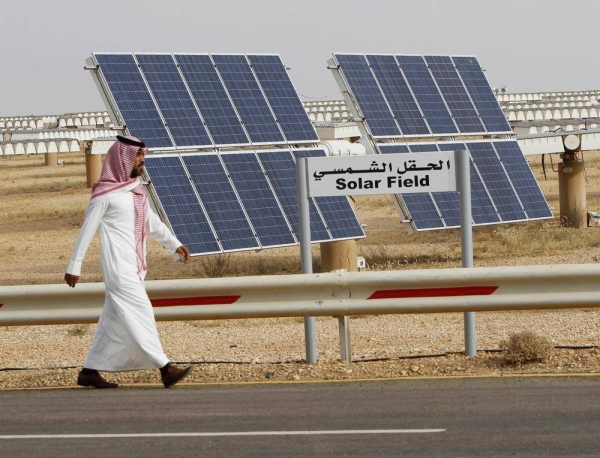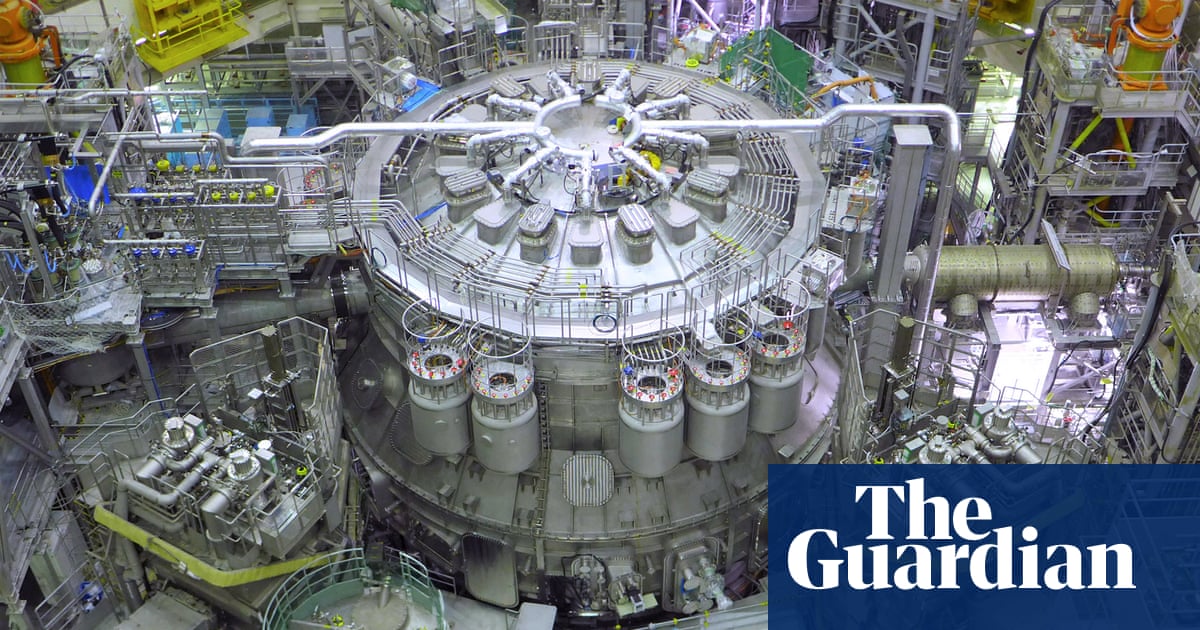
The world’s largest nuclear fusion project began its five-year assembly phase on Tuesday in southern France, with the first ultra-hot plasma expected to be generated in late 2025.
The €20bn (£18.2bn) Iter project will replicate the reactions that power the sun and is intended to demonstrate fusion power can be generated on a commercial scale. Nuclear fusion promises clean, unlimited power but, despite 60 years of research, it has yet to overcome the technical challenges of harnessing such extreme amounts of energy.
Millions of components will be used to assemble the giant reactor, which will weigh 23,000 tonnes and the project is the most complex engineering endeavour in history. Almost 3,000 tonnes of superconducting magnets, some heavier than a jumbo jet, will be connected by 200km of superconducting cables, all kept at -269C by the world’s largest cryogenic plant.
The French president, Emmanuel Macron, launched the assembly phase, alongside senior figures from Iter members, the EU, UK, China, India, Japan, Korea, Russia and the US. Shinzo Abe, the Japanese prime minister, said: “I believe disruptive innovation will play a key role in addressing global issues including climate change and realising a sustainable carbon-free society.”
“Enabling the exclusive use of clean energy will be a miracle for our planet,” said Bernard Bigot, Iter director-general. He said fusion, alongside renewable energy, would allow transport, buildings and industry to run on electricity.
But Bigot said: “Constructing the machine piece-by-piece will be like assembling a three-dimensional puzzle on an intricate timeline [and] with the precision of a Swiss watch.” The Iter project was conceived in 1985 but has suffered delays.
Nuclear fusion releases vast amounts of energy when heavy hydrogen atoms fuse together, but this requires a temperature of 150m C, 10 times hotter than the core of the sun. The hydrogen fuel is obtained from seawater and just a few grammes is needed but huge magnets are needed to contain the plasma in doughnut-shaped vacuum chamber known as a tokamak.
Like conventional nuclear fission reactors, the process itself does not produce climate-warming carbon dioxide but fusion reactors cannot meltdown and produce much less radioactive waste.
The Iter project will be the first to achieve a “burning” or self-heating plasma and is expected to generate 10 times more heat than is put in, far more than any previous attempt. It will also use a significant amount of electrical energy when it is running, to power the magnets and scientific instruments, But it is intended to be a proof-of-concept of large-scale fusion, not a design for a future commercial reactor.
Among the components being assembled is the 30-metre-diameter cryostat, manufactured by India, which surrounds the reactor and keeps it at the extremely low temperature required. One of the electromagnets, called the central solenoid and built by the US, will have the magnetic power to lift an aircraft carrier.
There are numerous private-sector companies pursuing nuclear fusion via much smaller devices, including Tokamak Energy, based in the UK and which has raised £117m in investment. Its executive vice-chairman, David Kingham, said: “We welcome the progress at Iter which we see as a great scientific project and a major endorsement of tokamak devices.”
“But we are convinced that faster progress is possible, driven by the need for more carbon-free energy and enabled by private investment, modular designs, new materials and advanced technologies,” he said. Iter engineers said their giant project is the size that proven technologies can deliver.
Other nuclear fusion companies include Tri Alpha Energy, which harnesses particle accelerator technology and is working with Google, General Fusion, which uses a vortex of molten lead and lithium to contain the plasma and is backed by Amazon’s Jeff Bezos and First Light Fusion.












